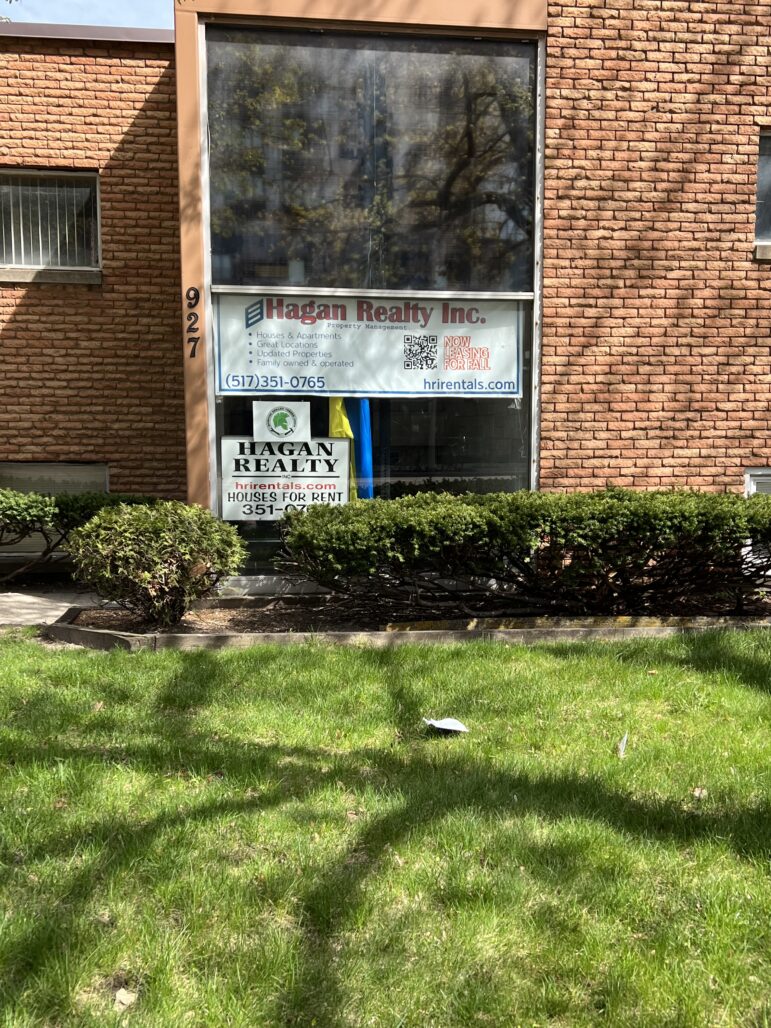EAST LANSING, Mich.—Over the last two years, a concerning pattern has emerged in college towns like East Lansing and across the country: an unrelenting increase in rent prices. Worries about the community’s overall economic well-being have been heightened as price increases have made it difficult for many residents and students to obtain affordable housing.
There were ups and downs in the East Lansing real estate market between 2022 and 2024. According to the Census Bureau, the average rental price for a two-bedroom apartment in East Lansing between 2018-2022 was $1,080. However, in East Lansing specifically, rentals are hundreds of dollars more a month.

One thing that sets East Lansing’s housing market apart from others is the fact that it is mostly geared at the student population. Students at Michigan State University who are looking for off-campus housing options are the primary demand for rental houses. This demand-supply dynamic frequently results in increased competition for moderately priced rentals, which makes it more difficult for residents, both students and non-student, to find options that are within their price range.
The university’s enrollment has increased consistently over the past two years, which has exacerbated the housing shortage in the region. Residents feel that the shortage of housing pushes them to forsake spending more in order to have that proximity and some of the nicer amenities. MSU junior, Nolan Youngstedt, said he had struggled with finding affordable rental options for this year and ultimately had to pay more for a place closer to campus. He elaborated on the challenges he has faced with the rental company, expressing dissatisfaction with the lack of effort considering the high rental fee he is paying.
“We pay $775 dollars a person for a four-bedroom apartment with one bathroom and broken coffee table and dishwasher that leaks constantly. How is that possible?” Youngstedt said.
Rising housing costs have serious effects, especially for students. Students, already struggling to make ends meet due to high costs of tuition and living expenses, are finding it more difficult to find affordable housing that is also located in close proximity to campus. Many are forced to compromise quality housing or a longer commute.
“Young professionals that have jobs that pay okay, maybe $50,000 a year, you might be in a situation where it’s very hard to find housing to afford and save money. The whole region is working on this challenge of housing availability, diversification, and affordability,” said Janet Lillie, assistant vice president of MSU’s Government Relations Office.
The affordability problem in East Lansing also affects the community’s ability to include people from all walks of life. Families and individuals with lower incomes are hit the hardest by the rising cost of living. They either must leave the city altogether or struggle to keep up.

Local advocacy groups and community organizations have been campaigning for laws that try to alleviate the shortage of affordable housing. The Rent is Too Damn High coalition advocates for building power among renters and unhoused people across the state of Michigan. The group says its four main goals are rent control, housing first, social housing, and a renter’s Bill of Rights. Additionally, initiatives such as the Affordable Housing Fund have been developed by the Lansing municipal government in partnership with other nonprofit groups.
The escalating housing and rent prices in East Lansing present a multifaceted challenge affecting students, residents and the broader community alike. The strain on housing availability not only impacts individuals’ financial well-being but also threatens the inclusivity and diversity of the community. However, amidst these challenges, there is hope in the form of local advocacy efforts and collaborative initiatives aimed at addressing the root causes of the housing crisis. By prioritizing affordable housing solutions and fostering partnerships between stakeholders, East Lansing can work towards a more equitable and sustainable future for all its residents.